Are you preparing to install a new tub in your bathroom and need help figuring out where the drywall ends? If so, you've come to the right place. We've done the research to provide you with the answers you need to install your bathtub properly.
Whether backer board or drywall, your surround material should rest on the edge of the tub flange but should not make contact with the lip.
You're probably wondering the difference between cement backer board and drywall or whether you need to incorporate a vapor barrier. Keep reading to learn how to complete your bathtub installation successfully.
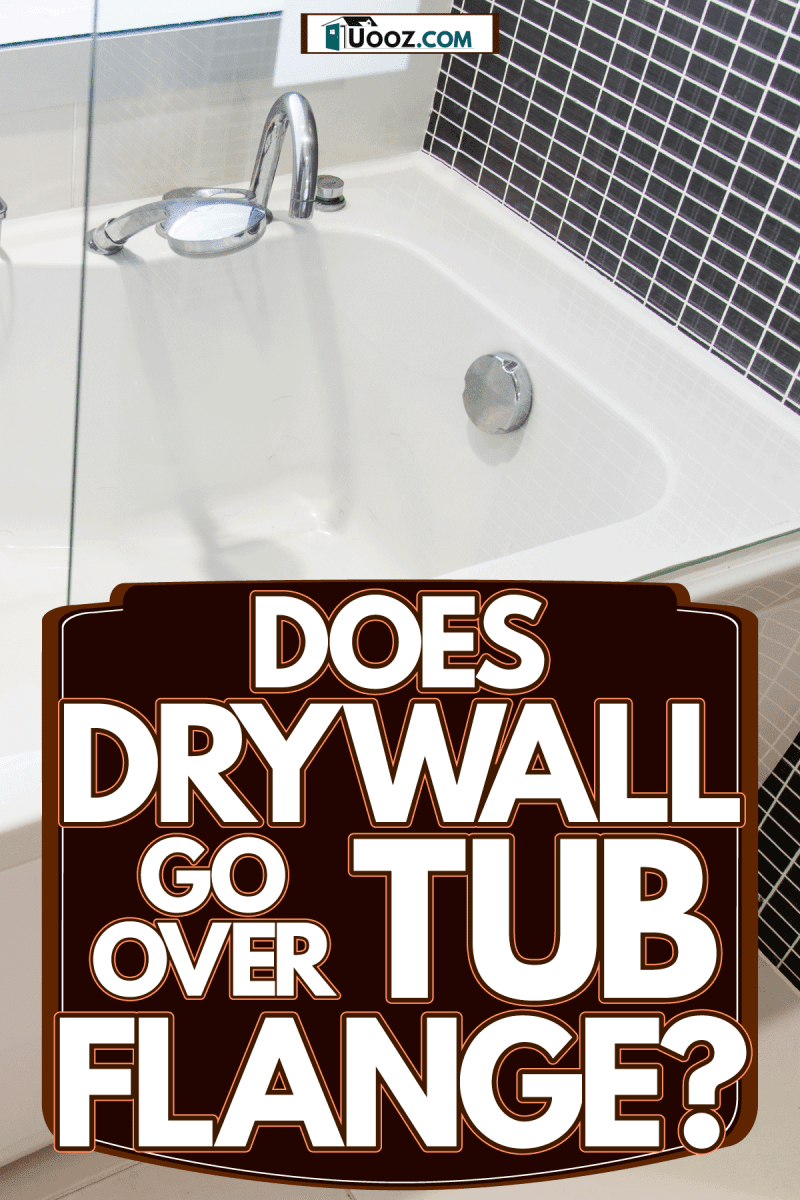
Should Bathtub Surround Material Overlap The Tub Flange?
Your tub surround material should not overlap the edge of the tub's flange; it should rest on top of the edge. This will allow water to run back into the tub, preventing it from soaking into the wall material and causing damage or running down the wall underneath the tub. Typically, the backer board will have tile that will slightly overlap the flange or caulk to cover the seam between the board and the flange edge.
What Is A Tub Flange?
The tub flange is the flare around the tub's edge that has a lip around it to catch water running down the walls. Your backer board will sit on the edge of the flange, and the tile will overlap the edge to cover the seam. If you don't plan to install tile, you must fill this seam with caulk before painting.
What Is The Difference Between Drywall And Cement Board?
Cement board is made of a more water-resistant mix of materials than drywall, and it's considered a great surface for tiling. Drywall is not usually moisture resistant but can be found in water-resistant varieties and works better with paint than tile. There are other options for bathtub surrounds as well, like fiber cement board or styrofoam board.
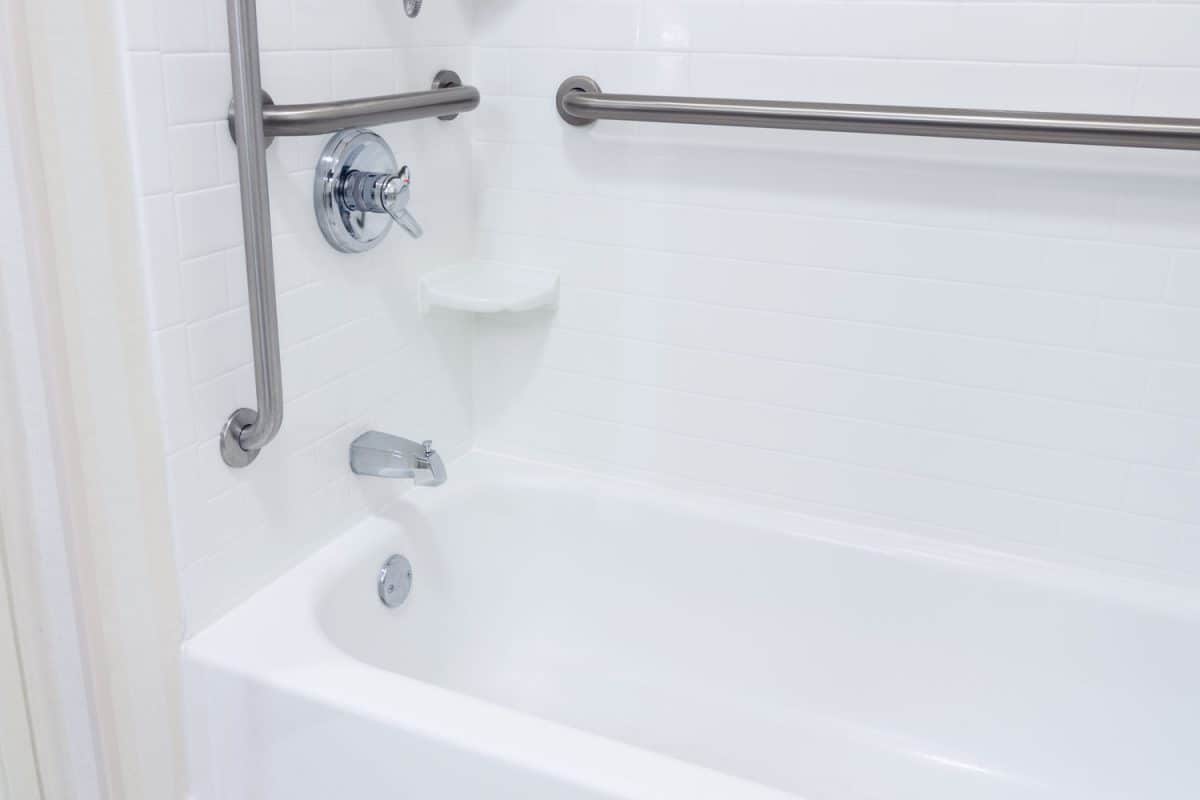
What Material Is Best For Bathtub Surround?
Drywall will typically work just fine for a bathtub surround, but more waterproof materials are preferred. A concrete backer board is an excellent water-resistant option and is probably the most popular choice for bathrooms. Styrofoam backer board has been increasing in popularity since it is completely water-resistant.
Goldberg 6-inch Drywall Saw
This saw will be perfect for cutting your drywall down to size for your bathtub backer board project. It works well for cement boards and plywood, making it a great tool to have around when planning wall-related projects.
Click here to see this saw on Amazon.
How Do You Drywall Around A Tub Flange?
To properly install drywall around a tub flange, you will need to know the terminology associated with a tub flange. This video details the anatomy of a tub flange and shows you where to install your surround material to prevent water damage. The video also shows the complete installation of a bathtub surround and walks you through the process step-by-step.
Do Bathroom Walls Need A Vapor Barrier?
Yes, the bathroom is one of the wettest rooms in a home, and because of the humidity and moisture build-up, it's essential to have a proper vapor barrier in all of your bathroom walls. The vapor barrier is a thick plastic sheeting that will need to be put in place before the drywall goes up.
Norkan Translucent Poly Sheeting
This clear plastic sheeting works great as a vapor barrier. It's 10 millimeters thick to provide heavy-duty protection and hold up well over time. This roll comes with 1,000 square feet of plastic, perfect for larger jobs like a bathroom remodel.
Click here to see this plastic sheeting on Amazon.
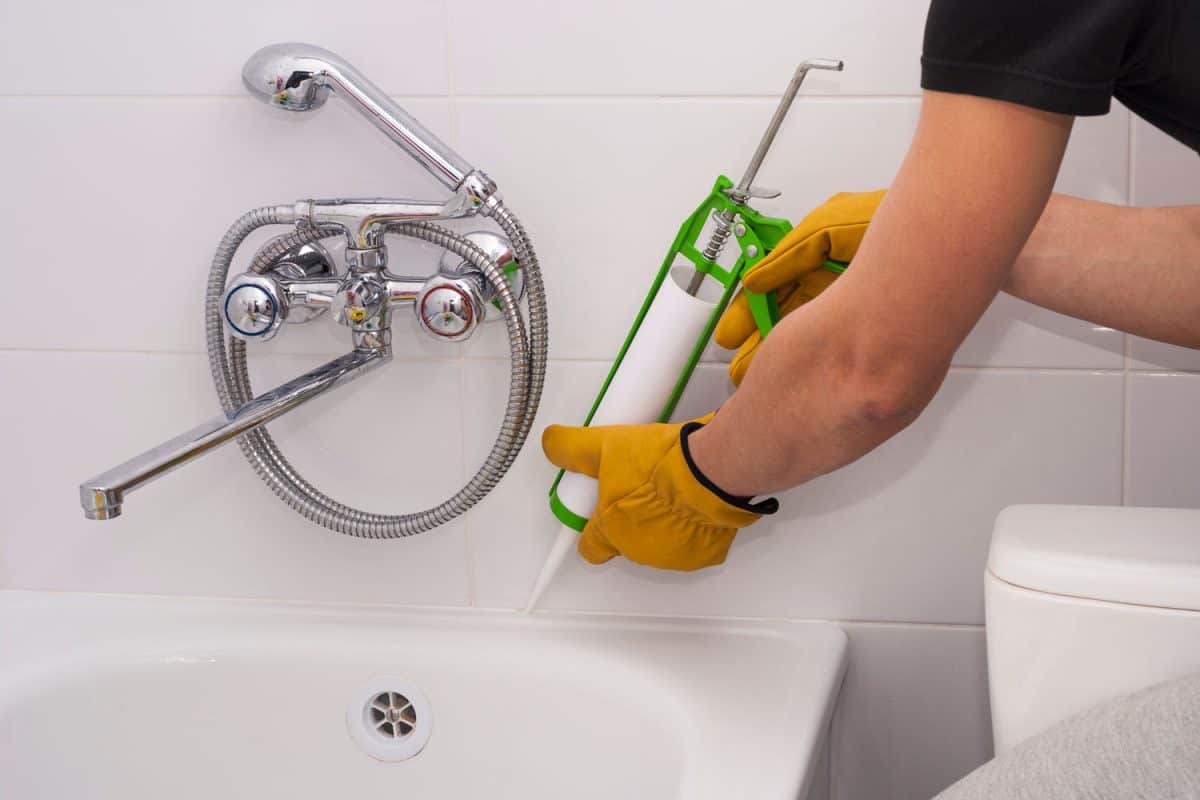
Should You Grout Or Caulk Around The Tub?
You should always use caulk around the bathtub due to its flexibility. Grout will crack if it is stressed, breaking its seal and allowing moisture through. Caulk is a much more pliable material that will stretch and bend under stress, remaining intact and protecting underlying materials.
Any time you are joining two surfaces or materials together, you should use caulk. Grout is intended for use on flat surfaces and should never be depended on for seams.
Loctite Tub And Tile Adhesive Caulk
This caulk is specifically designed for wet areas like kitchens and bathrooms. The formula contains a high mildewicide content to prevent mildew growth, making for a long-lasting seal.
Click here to check out this caulk on Amazon.
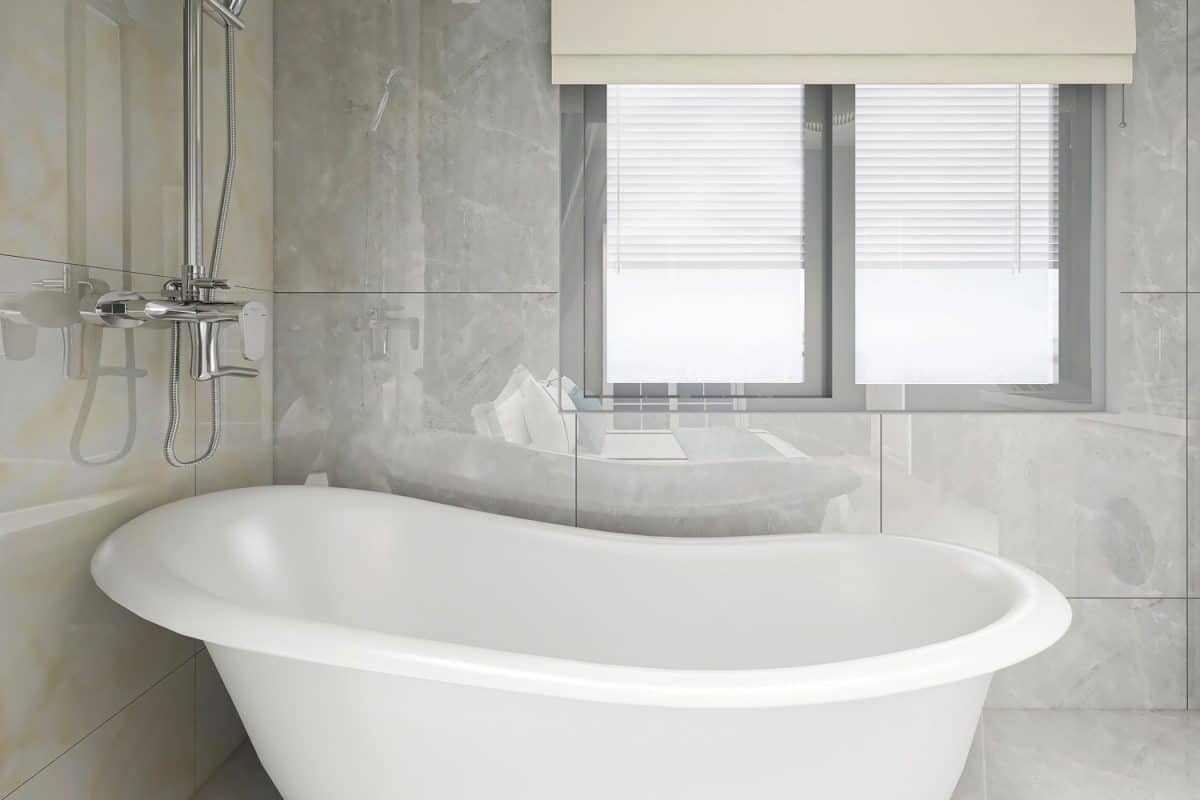
How Do You Prepare Drywall For Tile?
It is recommended to allow the walls an entire month for the mud to cure before applying tile thoroughly for new drywall. If the mud hasn't completely cured, you won't be able to prep the walls properly and may even run into future issues. Once your wall is ready, follow these steps to prepare it for tiling:
- Apply a skim coat to the surface of the drywall and allow it to dry completely.
- Once dry, sand down the surface with medium-grit sandpaper to create texture.
- Use a vacuum to clean away any dust left over from sanding, and use a damp cloth or sponge to wipe the drywall down.
- Apply your tile adhesive following the directions included on the packaging.
Fandeli 100 Grit Sandpaper
This medium grit sandpaper will work great for drywall or cement board prep. It comes in a pack of twenty-five sheets, which should be plenty for a bathtub surround.
Click here to take a look at this sandpaper on Amazon.
How Do You Prepare Cement Board For Tile?
A cement board wall will need to be prepared the same way as drywall before you can begin tiling the surface. You can use the same products and methods for both surfaces. The cement board will still need a vapor barrier behind it and a skim coat for protection against moisture.
DAP Wallboard Joint Compound
This joint compound can be diluted into a skim coat for tiling applications. It's available in both 3 and 12-pound containers for large or small jobs.
Click here to see this joint compound on Amazon.
Do You Need Drywall Behind Tubs With Built-In Surround?
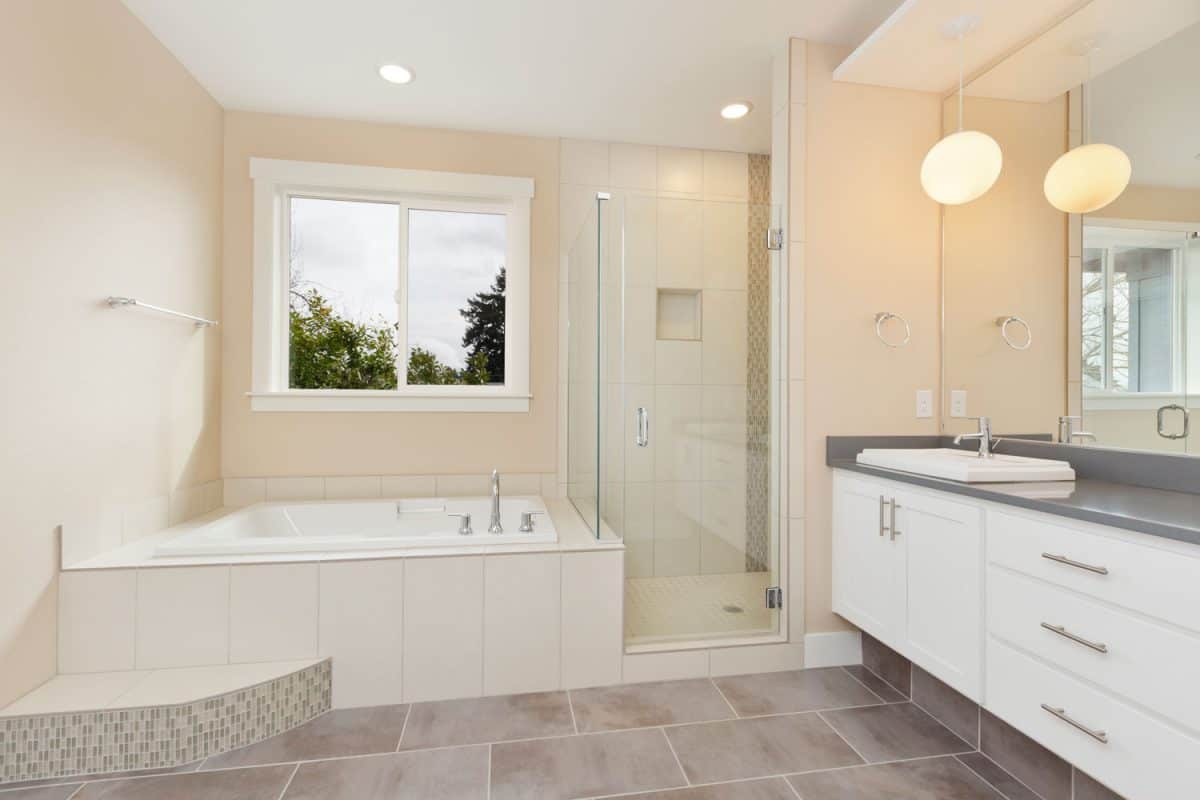
Some tubs have built-in walls or optional wall kits that come up most of the wall to create a single-piece waterproof unit. Some of these units allow for application directly to the wall studs, removing the need for drywall or cement board. Make sure to check the manufacturer's recommendations on installation before making a purchase.
American Standard Bathtub Wall Set
This bathtub wall set can be installed directly to the wall studs due to its waterproof design. It's easy to install, has tons of storage, and looks nice.
Click here to see this wall set on Amazon.
Can Drywall Be Used On Bathroom Ceiling?
Yes, you can use regular drywall on the bathroom ceiling as long as you use good paint and primer for protection against humidity. Most builders prefer to use water-resistant drywall on bathroom ceilings for extra peace of mind, particularly directly above the shower and tub area. Even moisture-resistant drywall will need to be treated with a good primer and paint for protection against humidity.
KILZ Mold And Mildew Resistant Primer
This primer was formulated with mildewcide to prevent the growth of mold and mildew in moist areas. It's a great choice for the bathroom, kitchen, basement, or anywhere else with high moisture levels.
Click here to see this primer on Amazon.
Can You Put Trim Around A Tub Surround?
You can use PVC trim if you want to cover caulked areas with trim to add elegance to the tub. You can find these waterproof trims in simple or intricate designs, and some versions may even add extra moisture protection to your new installation.
HG Jewelry Caulk Strip Tape
This PVC Tape works as a flat molding, and it has a convenient crease in the center to fit into corners. It can be used over the existing caulk to add an extra protection layer and hide seams nicely. It also comes with a tool to help you get a good seal in hard-to-reach areas.
Click here to take a look at this trim on Amazon.
Bathtub Beautification
Now that you know everything you need to complete your bathtub replacement properly, you're ready to get to work. Don't forget to gather all of your tools and equipment before you begin and to allow the drywall plenty of time to cure before installing tile. Have fun and enjoy your new bathroom.
You May Also Enjoy
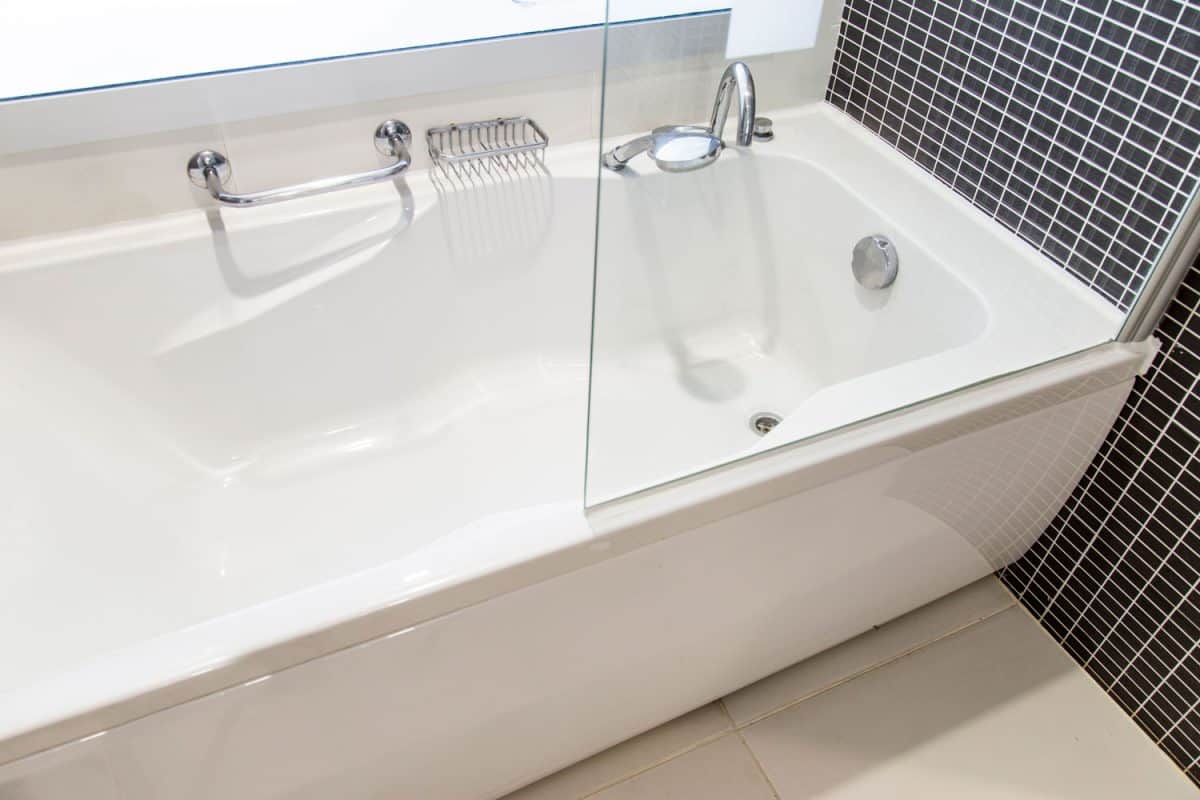
For help installing tile in a shower, read our article, "Should You Tile The Floor Or Walls First In A Shower?"
If you're not sure how to prepare a floor for a shower installation, read our article, "Should You Tile Under A Shower Base?"








